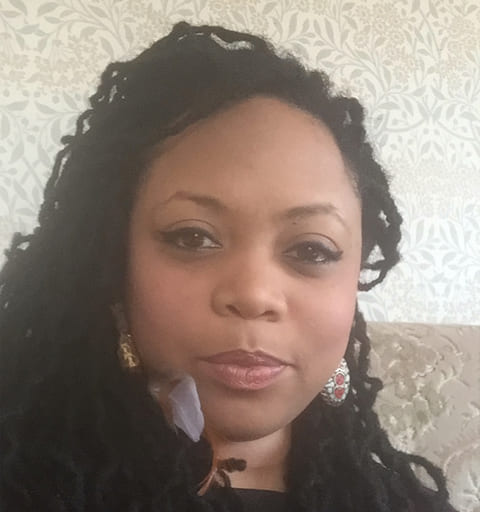Inclusive Storytelling: Disability Representation in Media

Once relegated to the margins, disability representation in the media is finally starting to take center stage. We’re seeing an increasing number of films and TV series breaking down stereotypes of disability representation and weaving in new, compelling stories. But the media and entertainment space hasn’t always been this inclusive.
Despite a significant portion of our world who live with a disability, this community is often either overlooked or misrepresented in on-screen content.
In this blog, we’ll take a look at the evolving role of the media industry, spotlighting groundbreaking shows and discussing how the media and communication industry can embed inclusion and equality in their narratives, both in front of and behind the camera.
What is the role of media and entertainment?
Media and entertainment are super influential in our lives. They do more than just entertain; they act like a mirror showing us what’s going on in society. They inform, educate, and connect us, introducing us to different ideas and cultures and experiences.
Now, think about how movies and TV shows portray people with disabilities. Often, it’s just stereotypical portrayals of people with disabilities that are shown on our screens, into stereotypes, depicting people in inaccurate and narrow ways. And yet, the media industry has an amazing opportunity to change this, sharing everyone’s story.
The media can really help change how we view disabilities and make our world more inclusive. And that’s a win-win for everyone.
Why does disability representation in media matter?
With nearly 1 billion people with disabilities making up about 15% of the global population, their representation is vital in the media. This group is not a minor demographic; it’s a significant part of our society.
While media portrayals of people with disabilities are increasing, they’re still not proportional. The media industry wields immense power to shape worldviews, offering a unique opportunity to enhance disability representation.
The media industry has an incredible power to shape and reframe how we see the world and the opportunity to use that influence to move the dial on disability representation.
It’s time to ‘rewrite the script’ on disability representation in the media, reflecting diverse cultures and challenging misconceptions. Changing the narrative in this way will help create a more inclusive world where every individual’s experience is recognized and valued.
Insight: A June 2023 report by Rooted in Rights highlighted that white cisgender disabled males are overrepresented in media, accounting for 40% of disability portrayal. This is higher than the combined representation of Black disabled characters (18%) and Indigenous and People of Color (16%). The focus is mainly on addiction, chronic disability, and mental health, while those with blindness, hearing impairment, learning disabilities, dwarfism, and intellectual disabilities are underrepresented.
5 Netflix shows representing people with disabilities
Netflix, in particular, has made strides in showcasing characters with disabilities in its shows, bringing diversity and representation to our screens. Here’s a brief look at 5 popular series that include characters with disabilities:
1. Breaking Bad
Perhaps one of the most acclaimed TV series of all time, “Breaking Bad” features Walter White Jr., portrayed by RJ Mitte, who has cerebral palsy. The show doesn’t shy away from addressing the challenges he faces due to his condition, but more importantly, it portrays him as a multidimensional character with his own story arc, not solely defined by his disability.
2. Stranger Things
This hit series introduces us to Dustin Henderson, played by Gaten Matarazzo. Dustin has cleidocranial dysplasia, a condition that affects the development of bones and teeth. “Stranger Things” is commended for not only including a character with a rare disability but also for casting an actor who genuinely lives with the condition, adding authenticity to the portrayal.
3. Sex Education
In this show, viewers meet Isaac, played by George Robinson, who uses a wheelchair. “Sex Education” is lauded for its inclusive storytelling, and Isaac’s character is a significant step forward in representing physical disability on screen. His character is woven into the narrative seamlessly, showcasing the normalcy of life with a disability.
4. Jessica Jones
This Marvel series features a lead character, Jessica Jones, grappling with post-traumatic stress disorder (PTSD). While PTSD is an invisible disability, its inclusion in a mainstream show like “Jessica Jones” is crucial for raising awareness about mental health issues and the impact they can have on an individual’s life.
5. Special
This is a Netflix original comedy series that provides a unique and authentic portrayal of disability. The story revolves around Ryan Hayes, a 28-year-old gay man with cerebral palsy. The show addresses the complexities faced by individuals with disabilities in the mainstream world, depicting Ryan’s challenges and triumphs in both his personal and professional life and includes various scenarios that resonate with the experiences of people with disabilities.
Each of these shows is part of an important trend in the media world, where there’s a growing focus on inclusivity and genuine representation of people with disabilities. They are breaking down old stereotypes and opening our eyes to the diverse experiences of people living with disabilities. It’s a much-needed shift in storytelling.
Insight: The Valuable 500 acknowledges the need for diverse representation of disabled individuals in media and advertising, emphasizing the importance of collaboration with disabled communities to craft these authentic narratives.
Who’s behind the scenes? Hiring disabled talent in media
“Seek out the other stories. Hire other disabled people in front of and behind the camera — because you and whatever project you are working on will be better for having done so.” Selma Blair, Actor, Author, Advocate
Selma Blair’s quote shows the need for diversity and inclusivity in the media and entertainment industry, particularly in the representation of disabled individuals. By advocating for the hiring of disabled people both in front of and behind the camera. Having people with disabilities in writing rooms, production teams, and decision-making roles ensures authenticity and depth in storytelling. It isn’t enough to portray disability narratives; these stories must be shaped by those who live them.
Blair highlights the value people with disabilities bring to creative projects. Their inclusion not only enriches the narrative with authenticity and varied perspectives but also ensures a more comprehensive and realistic portrayal of society.
Insight: Dentsu Global projected the global advertising expenditure for 2022 at a staggering $738.5 billion. However, in contrast, Nielson’s research revealed that in the United States, people with disabilities appear in less than 1% of primetime advertising.
The future of representation: a new era in entertainment
Embracing disability representation in entertainment goes beyond a mere checklist; it’s a mindset that demands continuous commitment and learning from everyone involved.
It’s important to recognize that any perceived limitations are often externally imposed and can be dismantled. The entertainment industry plays a pivotal role in this process.
By prioritizing accessibility and inclusion, creatives can enhance their work and contribute to a new story where every narrative is told authentically, and everyone feels a sense of belonging. This is a collective journey that producers, creators, marketers, and actors can walk together to foster a more inclusive era of entertainment.
On the journey towards making entertainment spaces more inclusive, it’s essential to have the right tools and partners to bring this vision to life. This is where digital accessibility becomes invaluable. It isn’t just about writing more inclusive scripts and working collaboratively with people with disabilities, it’s about asking the questions like:
1. How can subtitles and closed captioning be optimized in online media content to enhance accessibility for viewers with hearing impairments?
2. What are the best practices for implementing color contrast in digital media to ensure it is accessible and easily navigable for individuals with visual impairments?
3. What considerations should be made when choosing fonts and text sizes in online content to ensure readability and accessibility for all audiences, including those with dyslexia or other reading difficulties?
It’s about adapting digital content and embracing a philosophy that acknowledges every viewer’s experience.
UserWay: your partner in accessible media content
Digital accessibility efforts are a huge part of the journey to reaching wider audiences. UserWay’s suite of accessibility products and services, including the Accessibility Widget are a revolution in accessible content creation. UserWay’s team includes individuals with disabilities, who combine empathy and authenticity with professional expertise. Let UserWay guide you in embedding accessibility into your media content – from behind the scenes and on the screens.
FAQS
How can disability representation in the media be improved?
Improving disability representation in media involves actively including diverse disability narratives and hiring creators and actors with disabilities to ensure authenticity.
What role does media and entertainment play in shaping perceptions of disabilities?
Media and entertainment significantly influence public perceptions by either reinforcing stereotypes or promoting a more inclusive and realistic view of disabilities.
Why is it important for the media industry to focus on disability inclusion?
Focusing on disability inclusion allows the media industry to create more diverse, authentic, and relatable content that reflects the real-world experiences of its audience.




Share